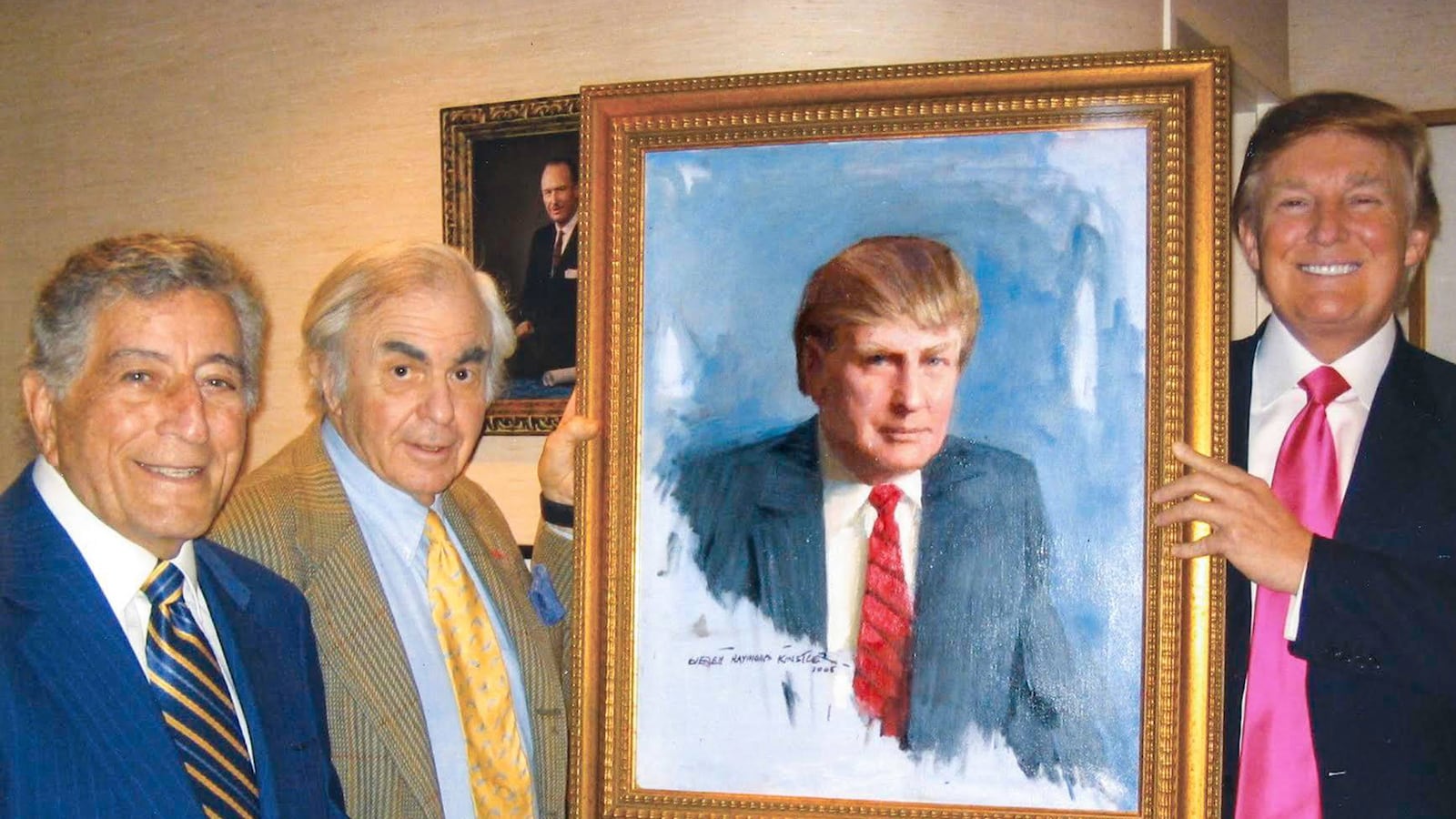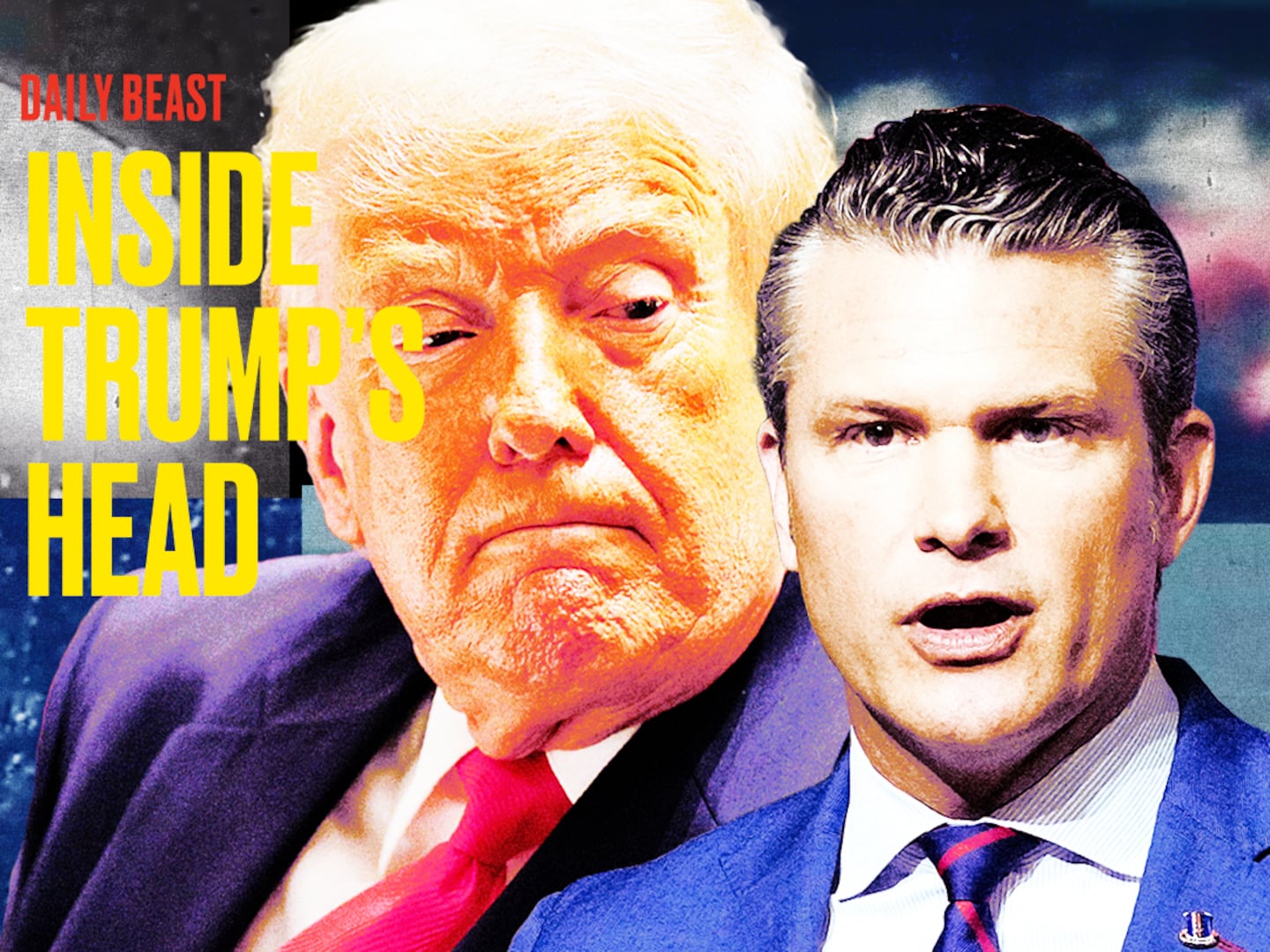Back in September, The Washington Post’s David Fahrenthold, whose exhaustive reporting on the Donald J. Trump Foundation over the course of the past year may earn him a Pulitzer, revealed that in 2007, Trump spent $20,000 of his charity’s money on a 6-foot-tall portrait of himself. The portrait was done by speed painter Michael Israel, which makes sense given Trump’s famously short attention span.
Three years later, the then real estate tycoon and reality show host commissioned renowned portrait artist Everett Raymond Kinstler to paint his portrait. The native New Yorker, now 90, began his career drawing pulpy comic books as a teenager before shifting his focus to portrait paintings in the 1950s. And, in the past six decades, he has become one of the most prolific and renowned portrait artists in America whose 2,000-plus portrait subjects include hundreds of famous musicians and movie stars, over 60 cabinet members, and every U.S. president since Gerald Ford (save Obama). Kinstler has captured everyone from John Wayne and Ayn Rand to Ronald Reagan.
As for Trump, Kinstler reveals during our chat—which took place prior to the presidential election—that painting the president-elect left him feeling like he was trying to converse with “a roulette wheel.” “He jumped from subject to subject so quickly that it was impossible to get a conversation going with him,” shared Kinstler.
When pressed for more, like whether the “locker room talk” practitioner ever shared any outlandish anecdotes with the artist, Kinstler demurred. “Yes. Yes he has. But you’re not going to hear it,” Kinstler said matter-of-factly. “I would say this: I’m a registered Republican, and have been my entire life. But I will probably vote Democrat this time.”

The portrait, it seems, also hinted at Trump’s presidential aspirations. “If you were to see the portrait and ask him who painted it, I think [Trump] would probably say, ‘Oh, I can’t remember his name, but he’s painted a lot of presidents.’ I think that’s what it meant to him.”
Despite his keeping mum on Trump, Kinstler claims that he remembers every line and crack of his portrait subjects. “I have absolute recall on all of them and it’s very simple: If you ask me where I had dinner last night, I’d really have to think about it. If you ask me who I saw the night before last, I’m not sure I’d remember. But if you ask me about people I painted 40 years ago, I’m as sharp about that as I could be,” he said. “The reason is simple: Because the people I’ve painted have meant much more in my life than I have in theirs. I’ll see someone I painted on the street and I’ve spent maybe 80 hours on the portrait—a lot of it by myself.”
In addition to Trump, Kinstler is intimately familiar with his opponent: Hillary Clinton. More than two decades ago, in 1995, the artist found himself seated in the Oval Office next to the then first lady as he sketched her husband, President Bill Clinton. According to Kinstler, Hillary struck him as “a very strong woman,” adding, “I met her again when I came down to D.C. with the portraits about a year later, and she accepted both. She was very gracious, and very interested in what I was doing.”
Kinstler’s path to portrait artistry wasn’t a straight one. In 1943, he dropped out of the esteemed High School of Music & Art in New York City (later Fiorello H. LaGuardia High School) in his early teens due to “artistic differences” (“I was more into commercial art and they were more into “paint what you feel”). He then answered an ad in The New York Times to be an inker—tasked with drawing over penciled-in comics with ink. Before long, he’d moved over to the comic book world and began doing the illustrations himself, working on Zorro, Agatha Christie collections, westerns, noirs, and even early Marvel books. “I was the guy who would get stories to illustrate that dealt with people—the detective, the pretty girl, the villain. I was not who they’d call upon for railroads or rocket ships or the technical stuff. I was more hard-boiled,” he said.

After nearly a decade of work in the comic book world, Kinstler, in his early 20s, was commissioned to paint the Ambassador to France. That painting eventually led to a commission to paint Forrest Mars Jr.—of the Mars candy company—and he hasn’t stopped since. “One portrait became two, two became four, and I didn’t look back.”
Kinstler has a unique perspective on Washington and Hollywood, capturing the faces of icons in the most peaceful and contentious of times. He grew close with some of his subjects, like the late Katherine Hepburn, who, in her old age, once invited him to her home for a TV dinner on Valentine’s Day only to kick him out as soon as the meal was done. Though some have claimed to know how he felt about a particular subject based on their portrait, Kinstler maintains that his job as an artist is and always will be to “chronicle, not to judge.”
The first president Kinstler painted was Gerald Ford—an extraordinary commission that came about through sheer word of mouth. It was the late 1970s and Kinstler had made a name for himself in Washington and Hollywood circles. “You would have every right to ask me, ‘How come you got this portrait?’ and I would say to you, ‘Well it’s my good looks and charms, I’m pretty fucking talented,’” he joked. “But I had painted eight or ten of his cabinet members. So [President Ford and the First Lady] invited me out to Vail, Colorado, and I had a wonderful time with them. I was there for five days.”
A special friendship with the Fords blossomed that lasted about 25 years. They went on to make him their unofficial portrait artist whenever a painting of either of them was requested. “We were in this studio with Leslie Stahl doing 60 Minutes and she said to President Ford, ‘How come Mr. Kinstler has painted you ten times?’ to which President Ford quipped, ‘Well, I want him to keep trying.’”

President Nixon and Kinstler did not develop that kind of bond. “I don’t think he was interested in the portrait at all. I didn’t connect with him,” he said. “[Nixon] was polite, though. However, I showed him my book of a lot of my work and he said, ‘Is this all your stuff?’”
His Ronald Reagan commission came not only from painting several of Reagan’s cabinet members, but also due to their mutual friendship with the actor James Cagney, who Kinstler had painted. Cagney also convinced John Wayne to commission Kinstler, and Wayne and Cagney’s friendship with Katherine Hepburn led Kinstler to paint her for the Player’s Club, which remains one of his most recognized pieces of art.
He’s painted every president since Ford except Obama, including President George W. Bush (“boyish, and with a wonderful sense of humor”) and Bill Clinton (“charismatic”). At present, he is working on portraits of the actor Bill Pullman; Drew Faust, the first female president of Harvard University; and General Joseph Dunford, 19th Chairman of the Joint Chiefs of Staff.
Kinstler, who claims to have never been starstruck—just “unsettled” by Katherine Hepburn—likens the amount of impressive people he has been able to paint to baseball. “If you’ve been to bat 500 times and you get 30 hits, you are no longer in the Major Leagues. I have painted probably 2,500 commissioned portraits—I think that’s conservative,” he said. “If I’ve painted 20 people who are celebrities, that’s like being at bat 500 times and getting 20 hits. Kid, you gotta find another sport.”






